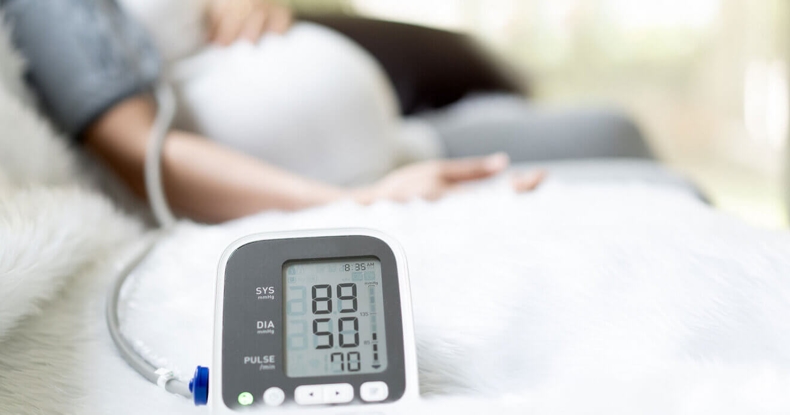5 Exercises That Can Improve Urinary Incontinence
- Category: Women's Health, Urination
- Posted On:
- Written By: LVMC Staff

Urinary incontinence can be frustrating and embarrassing to deal with. Also known as loss of bladder control, urinary incontinence can affect your daily life and make it difficult for you to do normal activities.
This condition cannot always be prevented. However, certain exercises may be able to improve your symptoms and cause you to have fewer leaks and accidents. Here are five exercises you can do to improve urinary incontinence and how to contact Lompoc Valley Medical Center if you need help treating or managing this condition.
What Causes Urinary Incontinence?
Urinary incontinence can be caused by any one of several factors. It may be caused by certain foods and drinks such as coffee, alcohol, and chili peppers. It may be caused by medications such as sedatives and muscle relaxants that relax the bladder. It is also a symptom of underlying medical conditions, including constipation, urinary tract infections (UTIs), and prostate cancer.
In addition to these potential causes, urinary incontinence has several risk factors. These risk factors include:
- Gender. Females are at higher risk.
- Age. Older adults are more likely to develop this condition.
- Weight. Being overweight or obese increases your risk.
- Smoking status. People who smoke are at higher risk.
- Family history. People with a family history of urinary incontinence are more likely to develop this condition.
- Diseases. Diabetes and some neurological diseases may increase your risk for urinary incontinence.
5 Exercises To Improve Urinary Incontinence
Most exercises that can improve urinary incontinence focus on strengthening the pelvic floor. The pelvic floor muscles support your bladder, bowel, and uterus. Strengthening these muscles can help prevent bladder leakage.
1. Kegel Exercises
Kegel exercises can benefit both males and females who suffer from loss of bladder control. In addition to improving urinary incontinence, Kegel exercises can help you recover more quickly after childbirth or prostate surgery.
Here are the steps for doing Kegel exercises:
- Focus on finding the muscles you use to urinate.
- Tighten those muscles as much as you can.
- Hold this position for five seconds at a time.
- Rest for several seconds, then repeat.
After doing Kegel exercises for a while, you should be able to tighten and hold these muscles for longer periods. Over time, your ability to prevent bladder leakage will gradually improve.
2. Squats
In addition to improving urinary incontinence, squats can strengthen the muscles in your hips, calves, hamstrings, and obliques. They can burn a lot of calories and help you lose excess weight.
Here are the steps for doing squats:
- Stand up and place your feet flat on the floor.
- Position your feet hip-width apart.
- Bend your knees slowly while positioning your buttocks toward the floor. Lean forward slightly and keep your back straight. Make sure your knees are lined up with your toes.
- Return slowly to a standing position. Your buttocks and pelvic floor should remain tight.
- Rest for a few seconds, then do 10 more reps.
Over time, gradually increase the number of squats you do at one time.
Proper form is highly important when doing squats. If your form isn’t right, you may experience knee pain. If you need help with doing squats, watch a video of a fitness professional doing them or ask for help from someone who works at your gym.
3. Bridges
Bridges can help strengthen your glutes in addition to your pelvic floor muscles. They can also tighten your buttocks, strengthen your core, and reduce back pain.
Here are the steps to do bridges:
- Lie down on the floor.
- Bend your knees, place your feet flat on the floor, and your arms down on your sides.
- Tighten your buttocks and pelvic muscles, then lift your buttocks several inches off the ground.
- Hold this position for between five and 10 seconds.
- Relax the muscles in your buttocks and pelvic floor, then lower your buttocks slowly back down to the ground.
- Rest for a few seconds, then repeat 10 times.
As days go by, work toward doing a higher number of bridges during each set.
4. Jumping Rope
Some people experience a type of urinary incontinence called stress incontinence when they do any activity that involves jumping. It occurs when excess pressure is placed on the bladder to cause bladder leakage. Coughing, sneezing, and laughing can also lead to stress incontinence.
Over time, jumping rope can strengthen your pelvic floor and improve urinary incontinence. You may experience some leakage during the first few days or weeks while jumping rope, which is completely normal. Just keep in mind that the more frequently you jump rope, the more quickly you may be able to stop bladder leakage.
Jumping rope is a highly beneficial aerobic workout. It can increase your lung capacity and help you lose excess weight. It also improves your balance, coordination, and heart health. It can even strengthen your bones to reduce the risk of osteoporosis.
Add several minutes of jump rope exercise to your existing fitness routine, or look online to get new ideas for fun jump rope workouts. An easy way to include jump roping in your strength-training routine is to do two minutes of jump rope between each exercise. For example, do two minutes of jump rope, followed by 10 pushups. Then, do another two minutes of jump rope, followed by 10 squats, and so on.
5. Squeeze and Release
The “squeeze and release” exercise is highly similar to Kegel exercises. The main difference is that you squeeze the muscles rapidly without holding them for a long period.
Here are steps to do the squeeze and release:
- Sit or stand up, and focus on the muscles you use to urinate.
- Squeeze those muscles as quickly as you can, then release them just as quickly without holding them.
- Rest for about five to 10 seconds, then repeat 10 to 20 times.
Do the squeeze and release exercise at least three times a day. This exercise is highly convenient, as it can be done any time, anywhere.
Other Ways To Improve Urinary Incontinence
Exercise is only one way to improve urinary incontinence. Other things you can do to improve your symptoms and stop leakage include:
Eating Healthy Foods
Fried foods and foods that are high in sugar can sometimes upset your stomach and cause you to rush to the restroom. These foods also sometimes lead to bladder or bowel leakage. If this happens to you, add more high-fiber foods to your diet. Foods high in fiber can make your stool bulkier and reduce the frequency of accidents. Fruits, vegetables, and whole grains may improve your symptoms.
Exercise Regularly
Any type of exercise can improve urinary incontinence, though the exercises mentioned in this article focus specifically on strengthening your pelvic floor to reduce leakage. Try to exercise on most days of the week to lose excess weight and to strengthen a higher number of muscle groups. Walking, swimming, biking, and yoga are examples of enjoyable exercises that can improve your condition.
Train Your Bladder
Start delaying trips to the restroom by at least one minute, and gradually increase that amount of time as days go by. This helps train your bladder to hold in urine, and can potentially prevent future leakage and accidents. Don’t continue holding your urine if you experience pain in your bladder. Holding your urine for too long can increase your risk of developing a UTI.
Complications Of Urinary Incontinence
A UTI is one of the more serious complications of urinary incontinence. Incontinence may cause you to develop several UTIs within a short period. When not treated, UTIs can lead to more serious health problems, including kidney infection, kidney damage, a narrowed urethra (in males), and sepsis.
Other complications of urinary incontinence include skin problems and reduced quality of life.
Incontinence can cause you to regularly have wet skin, which can lead to pimples, sores, rashes, and skin infections. This can cause great discomfort and may require special skin treatments.
In regards to the quality of life, incontinence can cause you to have embarrassing moments. It may affect your social and professional lives and your personal relationships. It could also require you to constantly wear incontinence briefs (diapers) or carry an extra change of clothing.
When To See a Doctor
Make an appointment with your doctor if urinary incontinence is affecting your quality of life or becoming more frequent. Your doctor can review your medical history, talk to you about your symptoms, and help you uncover the root cause of this condition.
Many times, your doctor will recommend doing exercises that strengthen your pelvic floor, such as those mentioned above. Your doctor may also prescribe medications that can calm an overactive bladder. If your incontinence is more severe, your doctor may discuss other treatments, including electrical stimulation and surgery.
Urology Services At Lompoc Valley Medical Center
Lompoc Valley Medical Center is home to a large team of highly experienced board-certified doctors who can diagnose and treat urinary incontinence. We can also work with you to identify the root cause of your urinary incontinence. Contact us today at (805) 737-8700 to request an appointment. We can talk to you about your treatment options and our many other healthcare services.






